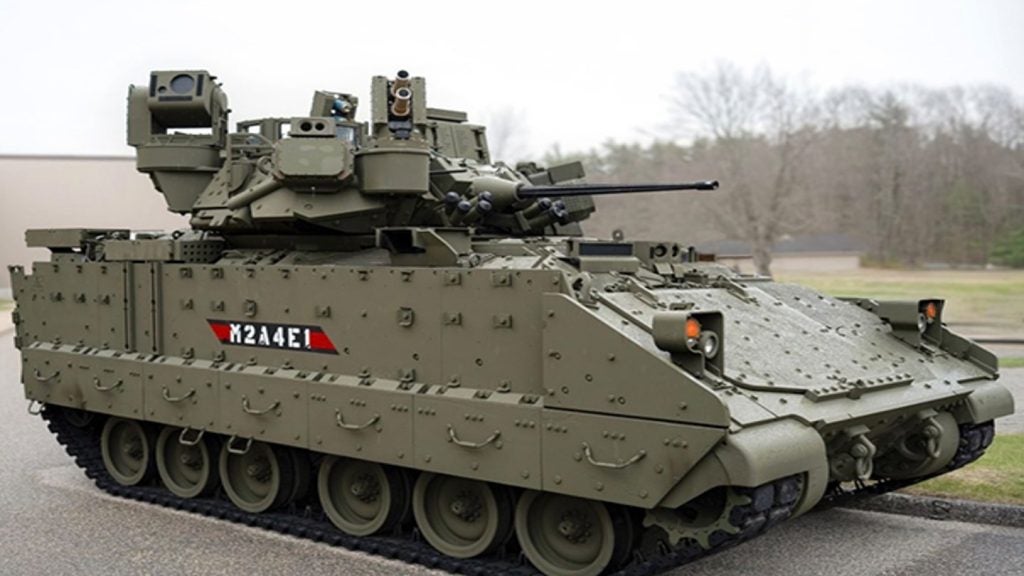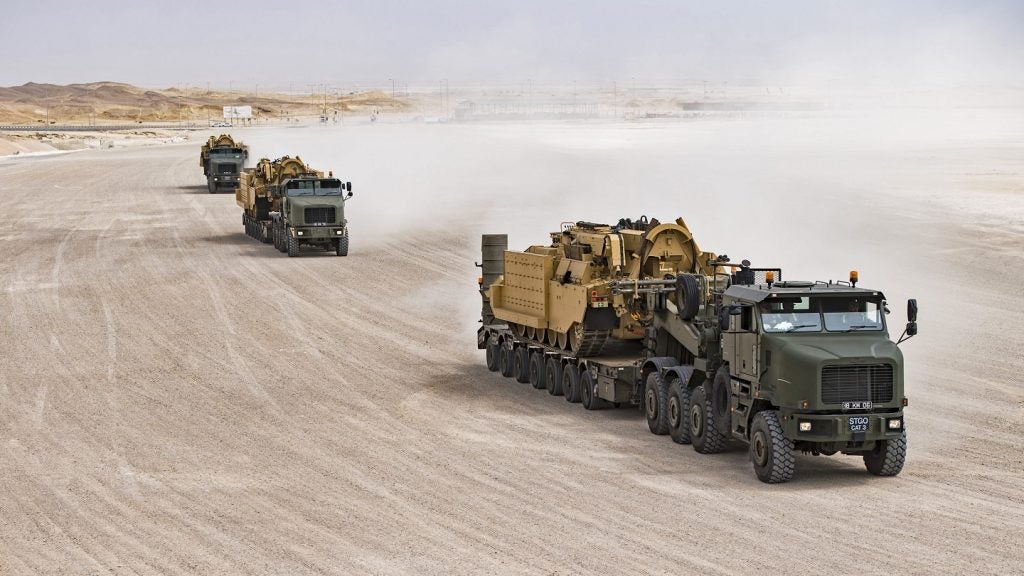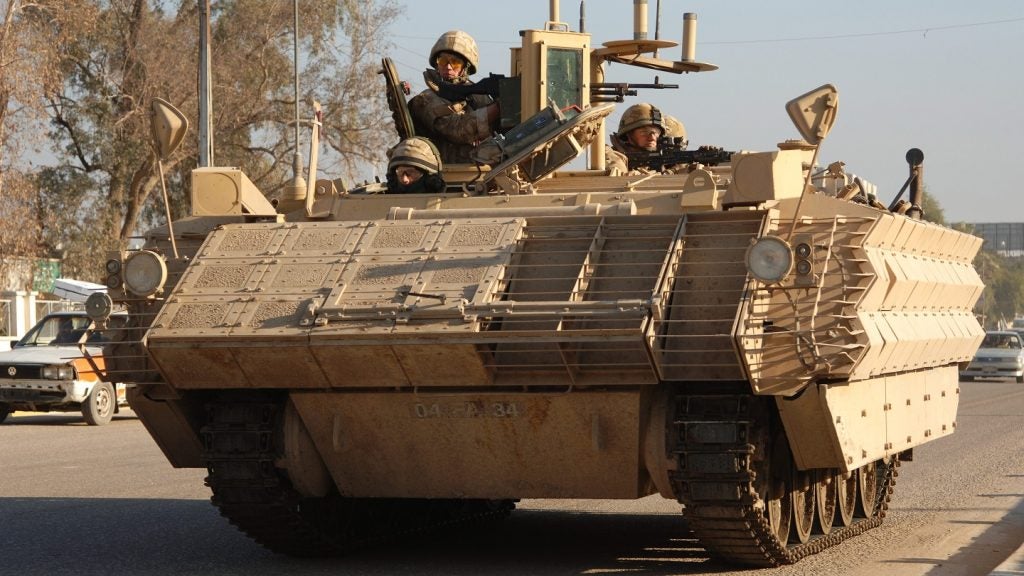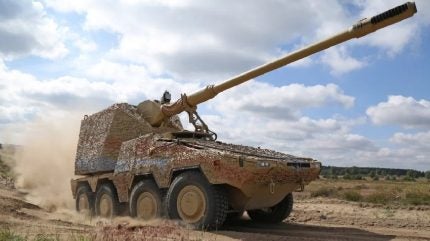
Seemingly out of left field, the UK has granted approval for the initiation of the co-development with Germany of the Boxer-based Remote-Controlled Howitzer 155mm (RCH 155) wheeled artillery systems for the long-planned Mobile Fires Platform (MFP) programme.
The RCH 155, which sees a remotely operated 155mm 52 calibre turreted weapon module fitted to the rear half of the Boxer mechanised infantry vehicle (MIV), will proceed through an assessment phase on the planned co-development with the UK as part of the MFP requirement.
In an announcement published late on 23 April regarding a visit by UK Prime Minister Rishi Sunak to Germany, it was stated that the two countries would “announce plans for a joint endeavour to develop Remote-Controlled Howitzer 155mm (RCH 155), which will be fitted to Boxer vehicles.”
The release added that the joint programme was expected to create “hundreds of British and German jobs” and would equip UK armed forces with “battle-winning capabilities” for future ground warfare.
A British Army release published on 24 April stated that the RCH 155 was intended to be delivered into service “this decade”, and would equip Royal Artillery personnel with a “world-class close-support artillery system”.
MFP programme takes unexpected turn
As recently as this week, Army Technology had analysed the prospective solutions to the MFP programme, which was expected to see a mix of wheeled and tracked options put forward by the industry later this year. The winner would replace the incumbent AS90 155mm self-propelled howitzer currently in service with the British Army.
How well do you really know your competitors?
Access the most comprehensive Company Profiles on the market, powered by GlobalData. Save hours of research. Gain competitive edge.

Thank you!
Your download email will arrive shortly
Not ready to buy yet? Download a free sample
We are confident about the unique quality of our Company Profiles. However, we want you to make the most beneficial decision for your business, so we offer a free sample that you can download by submitting the below form
By GlobalDataEarlier this month, UK Defence Procurement Minister James Cartlidge stated that the country would see a next-generation artillery system acquired “within five years”, with the programme at that time seeking approval to commence an assessment phase.
It appears that the decision will see the RCH 155mm solution through to the assessment phase and intended delivery to the British Army.
In Q4 2023, the UK took delivery of the first of 14 Archer 155mm SPH platforms from Sweden, as part of an interim artillery solution intended to bridge the gap between the donation of 32 AS90 SPH to Ukraine and the eventual winner of the MFP programme.
With Archer in service with the British Army, it was considered to be a strong contender for the MFP, along with the South Korean K9A2 Thunder-tracked SPH.
MFP programme “fundamental” to British Army
The importance of the MFP programme to the British Army cannot be overestimated, with the real-world lessons of the applicability of artillery being seen daily in the Ukraine-Russia war, a conflict in which perhaps the determining factor for success is the availability of long-range fire support and ammunition provision.
James Marques, GlobalData defence analyst, described the MFP as “fundamental” to the British Army’s modernisation plans in the medium term, speaking before the UK’s RCH 155 announcement.
“Discussing any sort of generating a conventional warfare formation without adequate artillery is a non-starter,” Marques said, adding the British Army had “a lot to figure out” in terms of the intended range and ammunition of the MFP programme.
“I believe that the initial timeline given [in 2023] was based on AS90’s original retirement date, but since donating some of those to Ukraine and the security situation more broadly I wouldn’t be surprised if there are aspirations to get it done sooner, [and] would be a good example for the MoD of overcoming previous procurement problems,” Marques explained.
UK Mobile Fires Platform: Boxer commonality key
The commonality provided with the use of the wheeled 8×8 Boxer as a host platform for the RCH 155 system is significant, with the British Army already firmed up on the procurement of more than 600 MIVs in the years ahead, with early vehicles already in testing.
The Boxer has long been touted as a multi-role platform, showcasing a range of possible payload solutions at trade shows in recent years, including as a mobile fires platform, as well as moduled Brimstone anti-armour systems.
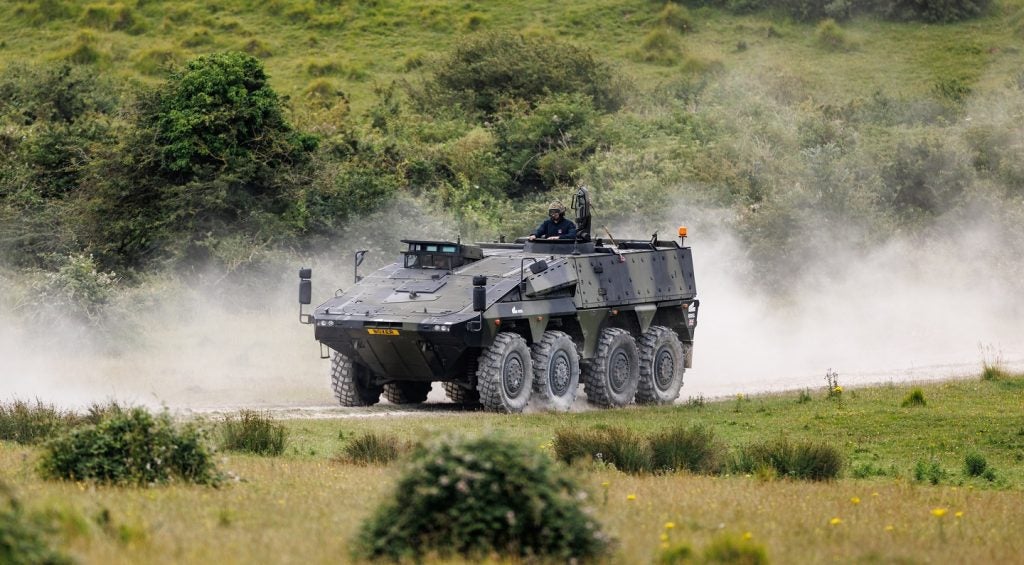
In its 24 April release, the British Army said that “as part of the Boxer family, [RCH 155] uses a common Boxer drive module, creating efficiencies in support through platform commonality and modularity, and improving interoperability.”
The RCH 155 sees the combination of the 8×8 Boxer armoured vehicle with an Artillery Gun Module (AGM) from German-OEM Krauss-Maffei Wegmann. KNDS, a jointly owned holding company of Krauss-Maffei Wegmann and Nexter, markets the RCH 155 system.
The system is based on the German Army’s PzH 2000 SPH, intending to mix the mobility of the Boxer platform with the firepower of its tracked cousin.
The RCH 155 can fire up to nine rounds per minute to a range of up to 40km with standard ammunition, increasing to a potential 54km using extended-range munitions. The AGM of the RCH 155 is uncrewed, with the platform operated by a driver/operator and commander from the front cabin.



